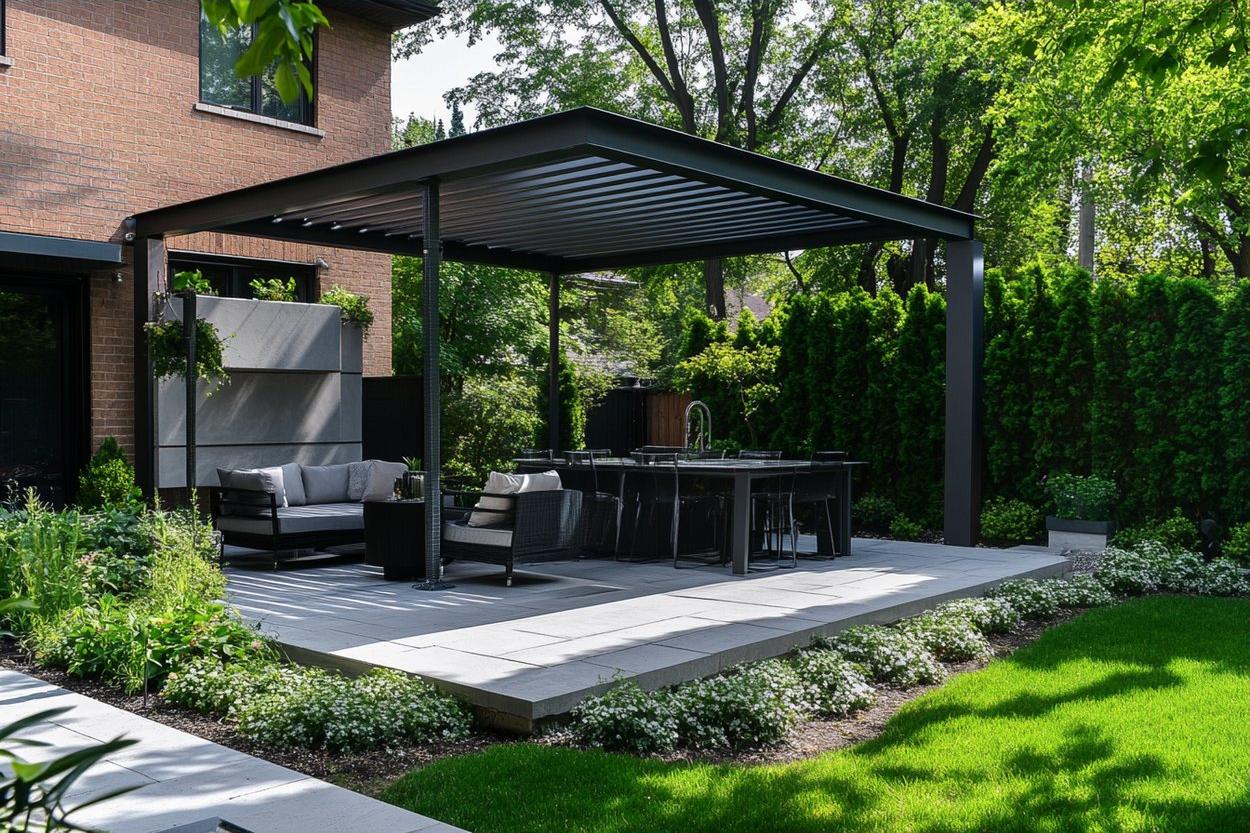Enhancing Your Outdoor Living Space: The Benefits of Patio Awnings
Creating a comfortable and inviting outdoor living area is a goal for many homeowners. One of the most effective ways to achieve this is by installing a patio awning. These versatile additions not only provide shade and protection from the elements but also enhance the aesthetic appeal of your home's exterior. In this article, we'll explore the advantages of patio awnings and how they can transform your outdoor space into a more enjoyable retreat.

Moreover, awnings offer protection from light rain, allowing you to continue enjoying your outdoor space even when the weather is less than perfect. This extended usability of your patio area means you can make the most of your outdoor living space throughout more months of the year.
What types of patio awnings are available?
There are several types of patio awnings to choose from, each with its own set of benefits and aesthetic appeal:
-
Retractable awnings: These versatile options can be extended when shade is needed and retracted when you want to enjoy full sunlight. Many retractable awnings are motorized for easy operation.
-
Fixed awnings: Permanently installed, fixed awnings provide constant shade and protection. They’re ideal for areas that require consistent coverage.
-
Freestanding awnings: These standalone structures can be placed anywhere in your outdoor space, offering flexibility in shade placement.
-
Pergola awnings: Combining the structure of a pergola with the shade of an awning, these options offer a stylish and functional solution for larger patio areas.
-
Window awnings: While not specifically for patios, these smaller awnings can complement your patio awning and provide additional shade and energy efficiency for your home.
How do awnings enhance the aesthetic appeal of a home?
Patio awnings are not just functional; they can also significantly enhance the visual appeal of your home’s exterior. Available in a wide range of colors, patterns, and styles, awnings can be chosen to complement your home’s architecture and personal taste. They add depth and dimension to your facade, creating visual interest and potentially increasing your property’s curb appeal.
Furthermore, awnings can define outdoor living spaces, creating a seamless transition between your indoor and outdoor areas. This visual connection can make your patio feel like an extension of your home, effectively increasing your living space and providing a cohesive look to your property.
What materials are commonly used for patio awnings?
The durability and appearance of your patio awning largely depend on the materials used in its construction. Some common materials include:
-
Acrylic fabric: Known for its durability and resistance to fading, acrylic is a popular choice for awning fabrics. It’s available in a wide range of colors and patterns.
-
Polyester: This synthetic fabric is lightweight, resistant to stretching, and often treated for water resistance.
-
Canvas: A traditional awning material, canvas offers a classic look but may require more maintenance than synthetic options.
-
Metal: Aluminum awnings provide excellent durability and low maintenance but offer less flexibility in design compared to fabric options.
-
Vinyl: Known for its waterproof properties, vinyl awnings are easy to clean and maintain but may have a more limited color selection.
How can patio awnings contribute to energy efficiency?
Patio awnings can play a significant role in improving your home’s energy efficiency. By blocking direct sunlight from entering your home through windows and glass doors, awnings can reduce the amount of heat gain inside your house. This reduction in solar heat can lead to lower cooling costs during hot summer months.
Studies have shown that awnings can reduce solar heat gain by up to 77% on west-facing windows and 65% on south-facing windows. This not only helps maintain a comfortable indoor temperature but also reduces the strain on your air conditioning system, potentially extending its lifespan and lowering energy bills.
What maintenance is required for patio awnings?
To ensure the longevity and continued performance of your patio awning, regular maintenance is essential. Here are some key maintenance tasks:
-
Regular cleaning: Brush off loose dirt and debris, then clean the awning fabric with a mild soap solution and soft brush. Rinse thoroughly and allow to dry completely before retracting.
-
Inspect for damage: Regularly check for tears, loose hardware, or signs of wear and address issues promptly to prevent further damage.
-
Lubricate moving parts: For retractable awnings, lubricate the moving parts as recommended by the manufacturer to ensure smooth operation.
-
Store properly: In areas with harsh winters, consider removing and storing fabric awnings during the off-season to protect them from snow and ice damage.
-
Address mold and mildew: If you notice any signs of mold or mildew, clean the affected areas with a solution of one part bleach to four parts water, followed by thorough rinsing and drying.
By investing in a patio awning, you can create a more comfortable, attractive, and energy-efficient outdoor living space. With proper selection, installation, and maintenance, your patio awning can provide years of enjoyment and enhance your home’s overall value and appeal.






